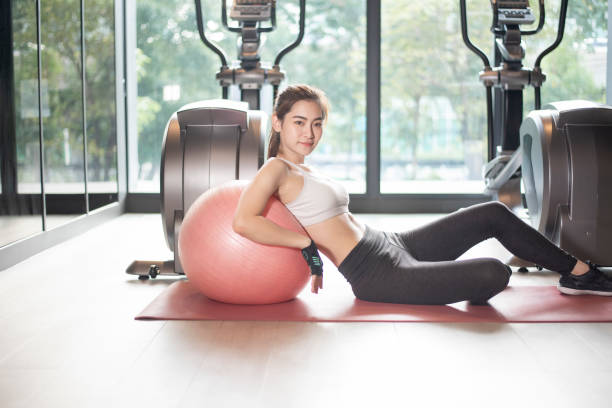Posture is more than just the way we stand or sit—it is the foundation of how we move, breathe, and live in our bodies. Good posture is not about rigidly holding yourself upright like a soldier at attention; it is about alignment, balance, and ease. When your spine, shoulders, and hips are in harmony, the body functions as it was designed to: muscles work efficiently, joints bear weight without strain, and breathing flows freely.
But in our modern world, posture has become a casualty of convenience. Hours hunched over laptops, staring down at smartphones, or sitting in cars have reshaped the way our bodies carry themselves. The forward head tilt, rounded shoulders, and slouched lower back—sometimes called “tech neck” or “computer hunch”—are not just cosmetic issues. They can cause chronic pain, limit mobility, and even affect mood and energy.
The good news is that posture is not fixed. Through awareness and consistent movement, you can retrain your body, strengthen key muscles, and release tightness that pulls you out of alignment. Exercises designed to improve posture are not just about standing taller—they are about reducing pain, reclaiming confidence, and allowing your body to move freely again.
The Science of Posture and Pain
The human spine is a masterpiece of engineering. Its natural curves—the cervical (neck), thoracic (upper back), and lumbar (lower back)—provide strength, flexibility, and shock absorption. Good posture maintains these curves in balance, while poor posture exaggerates or flattens them.
For example, slouching compresses the thoracic spine and causes the head to jut forward. Since the head weighs about 10–12 pounds, every inch it moves forward adds additional strain on the neck and upper back muscles. Over time, this creates tension headaches, shoulder tightness, and even nerve irritation.
Likewise, sitting with a rounded lower back places excessive pressure on spinal discs and weakens the core muscles that stabilize the pelvis. This can lead to lower back pain, one of the most common musculoskeletal complaints worldwide.
Research shows that posture also influences how we feel. Slouched positions are associated with lower energy, poorer mood, and even reduced confidence, while upright posture has been linked to increased alertness and improved breathing capacity.
By improving posture through targeted exercises, we can alleviate pain, prevent injuries, and enhance overall quality of life.
Principles of Postural Exercise
Before diving into specific movements, it is important to understand the principles that guide posture-improving exercises:
- Strengthen weak muscles: Poor posture often results from weak postural muscles such as the deep core, glutes, and upper back. Exercises should target these areas.
- Stretch tight muscles: Opposing muscles—like the chest, hip flexors, and hamstrings—often become short and tight. Stretching restores balance.
- Promote awareness: Good posture begins with noticing alignment throughout the day. Exercises help retrain body awareness so correct posture feels natural.
- Prioritize consistency over intensity: You don’t need heavy weights or extreme workouts to improve posture. Gentle, regular practice is far more effective.
With these principles in mind, let’s explore the best exercises to improve posture and reduce pain.
Exercises for the Upper Back and Shoulders
1. Wall Angels
How it helps: Wall angels strengthen the muscles of the upper back, improve shoulder mobility, and retrain the body to open the chest instead of slouching.
How to do it:
- Stand with your back against a wall, feet a few inches away, and lower back gently pressing into the wall.
- Place your arms in a goalpost position (elbows bent at 90 degrees).
- Slowly slide your arms upward as if making a snow angel, keeping them as close to the wall as possible.
- Lower them back down and repeat 10–15 times.
Tip: Focus on moving slowly and keeping ribs tucked in to avoid arching the back.
2. Scapular Squeezes
How it helps: Strengthens the rhomboids and middle trapezius, muscles that pull the shoulder blades back into alignment.
How to do it:
- Sit or stand tall.
- Squeeze your shoulder blades together, imagining you are holding a pencil between them.
- Hold for 3–5 seconds, then relax.
- Repeat 15–20 times.
Tip: Keep shoulders relaxed—avoid shrugging upward.
3. Reverse Flys
How it helps: Builds strength in the posterior shoulder and upper back, counteracting rounded shoulders.
How to do it:
- Sit on the edge of a chair or stand with a slight hinge at the hips.
- Hold light dumbbells or water bottles in each hand, arms hanging down.
- With a slight bend in the elbows, lift arms outward until they form a “T” shape.
- Slowly lower and repeat for 12–15 reps.
Tip: Move with control and avoid swinging.
Exercises for the Core and Lower Back
4. Plank
How it helps: Builds deep core stability, which supports the spine and pelvis for better posture.
How to do it:
- Lie face down, then lift onto forearms and toes.
- Keep your body in a straight line from head to heels.
- Engage your core, squeeze glutes, and avoid letting hips sag.
- Hold for 20–60 seconds.
Tip: If too challenging, start with knees on the ground.
5. Dead Bug
How it helps: Trains the deep abdominal muscles while keeping the spine stable.
How to do it:
- Lie on your back with arms extended toward the ceiling and knees bent at 90 degrees.
- Slowly lower your right arm and left leg toward the floor while keeping your back flat.
- Return to start and switch sides.
- Perform 10–12 reps per side.
Tip: Focus on control and avoid arching your lower back.
6. Bird Dog
How it helps: Strengthens the spinal stabilizers, glutes, and shoulders.
How to do it:
- Begin on hands and knees.
- Extend your right arm forward and left leg backward, keeping hips level.
- Hold for 2–3 seconds, then return and switch sides.
- Perform 10–12 reps per side.
Tip: Keep your gaze down to avoid straining your neck.
Exercises for the Hips and Lower Body
7. Glute Bridges
How it helps: Activates the glutes, which are often weak in people with poor posture, helping stabilize the pelvis and lower back.
How to do it:
- Lie on your back with knees bent and feet flat on the floor.
- Press through your heels to lift hips until your body forms a straight line from shoulders to knees.
- Hold for 2–3 seconds, then lower.
- Repeat 12–15 times.
Tip: Avoid arching the back—focus on squeezing glutes.
8. Hip Flexor Stretch
How it helps: Counteracts tightness from sitting, which can tilt the pelvis forward and strain the lower back.
How to do it:
- Kneel with one foot forward, forming a 90-degree angle at both knees.
- Gently shift your hips forward until you feel a stretch in the front of the hip.
- Hold for 20–30 seconds per side.
Tip: Keep your torso upright—don’t lean forward.
9. Hamstring Stretch
How it helps: Relieves tight hamstrings that contribute to slouching and lower back discomfort.
How to do it:
- Sit on the edge of a chair with one leg extended straight.
- Keep your back straight and lean forward slightly until you feel a stretch in the back of your thigh.
- Hold for 20–30 seconds per side.
Tip: Avoid rounding your back—hinge from the hips.
Integrating Postural Exercises Into Daily Life
The best posture exercises are the ones you do consistently. You don’t need hours at the gym—just 10–20 minutes a day can create real change. Here are strategies to make postural exercise a daily habit:
- Micro-breaks: Every hour, stand up, stretch your chest, and roll your shoulders.
- Desk setup: Keep screens at eye level, feet flat on the ground, and chair supportive of natural curves.
- Movement snacks: Sprinkle wall angels, scapular squeezes, or bridges into your day instead of waiting for a workout session.
- Mindful reminders: Use phone alarms or sticky notes as posture cues.
Over time, these practices retrain both muscles and habits, making good posture effortless.
When Posture Exercises Relieve Pain
Postural exercises are not just about looking taller—they can relieve chronic discomfort. People who practice them often report:
- Reduced neck and shoulder tension
- Fewer headaches caused by muscle strain
- Less lower back pain from weak cores or tight hips
- Improved flexibility and freedom of movement
- A general sense of energy and ease in daily life
Pain reduction happens because exercises restore balance between muscle groups, improve circulation, and encourage proper spinal alignment. Instead of constantly fighting against gravity, your body learns to move with it.
The Emotional Impact of Better Posture
Standing tall is not only physical—it is emotional. Posture influences how we feel about ourselves and how others perceive us. Research shows that upright posture is associated with greater self-confidence, higher energy, and even reduced symptoms of depression.
When you align your body, you send a message to your brain and to the world: I am strong, capable, and present. This mind-body connection makes postural exercise not only a path to pain relief but also a gateway to greater well-being and self-expression.
The Long-Term Benefits of Postural Training
Investing in your posture pays lifelong dividends. Strong postural muscles protect joints from wear and tear, making movement more efficient and reducing injury risk. As we age, posture becomes even more crucial—upright alignment supports balance, reduces the risk of falls, and preserves independence.
Good posture also enhances athletic performance, allowing energy to flow efficiently through the body. Whether you’re running, lifting, or simply walking, proper alignment maximizes strength and minimizes strain.
A Journey Toward Alignment
Improving posture is not about perfection—it’s about progress. Every stretch, every repetition, every mindful moment spent sitting tall or standing aligned is a step toward reducing pain and reclaiming ease in your body.
The journey requires patience. Just as poor posture develops over years of habits, retraining the body takes time. But the rewards are worth it: freedom from chronic aches, greater confidence, and a body that moves with grace rather than resistance.
Ultimately, the best exercises to improve posture and reduce pain are not just about mechanics—they are about reconnecting with yourself. They remind you that your body is not a burden to be endured but a partner to be nurtured. And when your body stands tall, your spirit does too.






